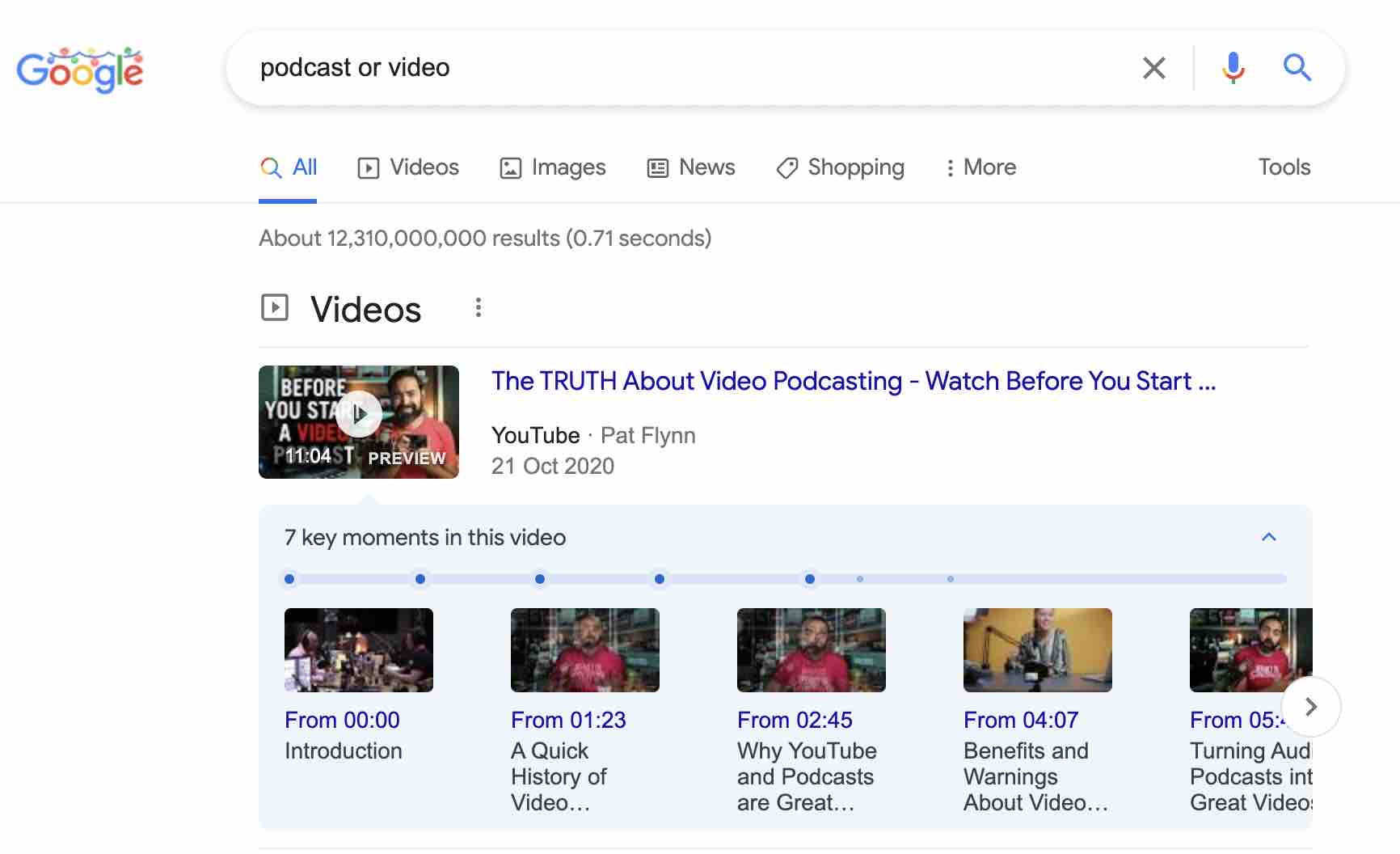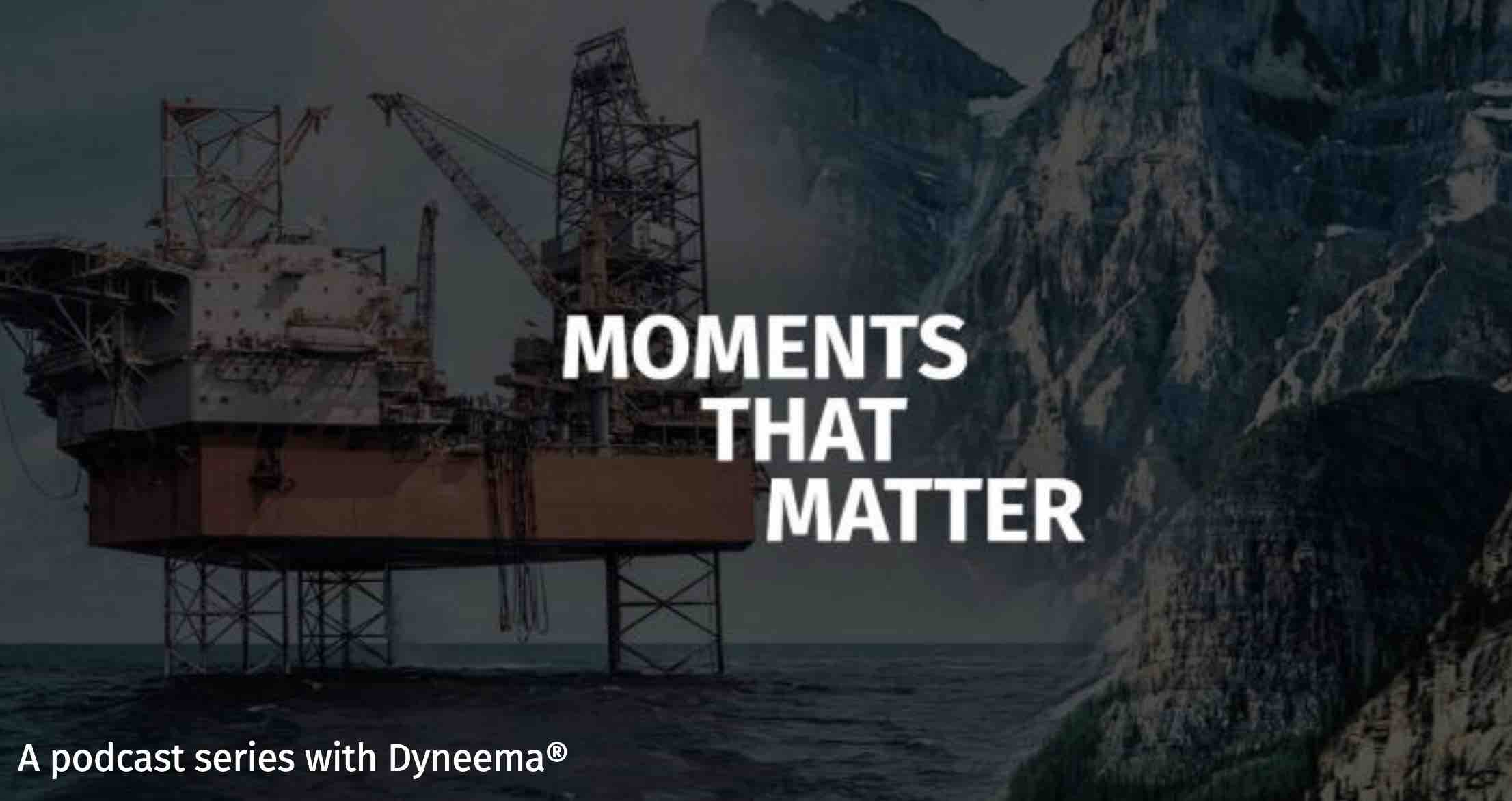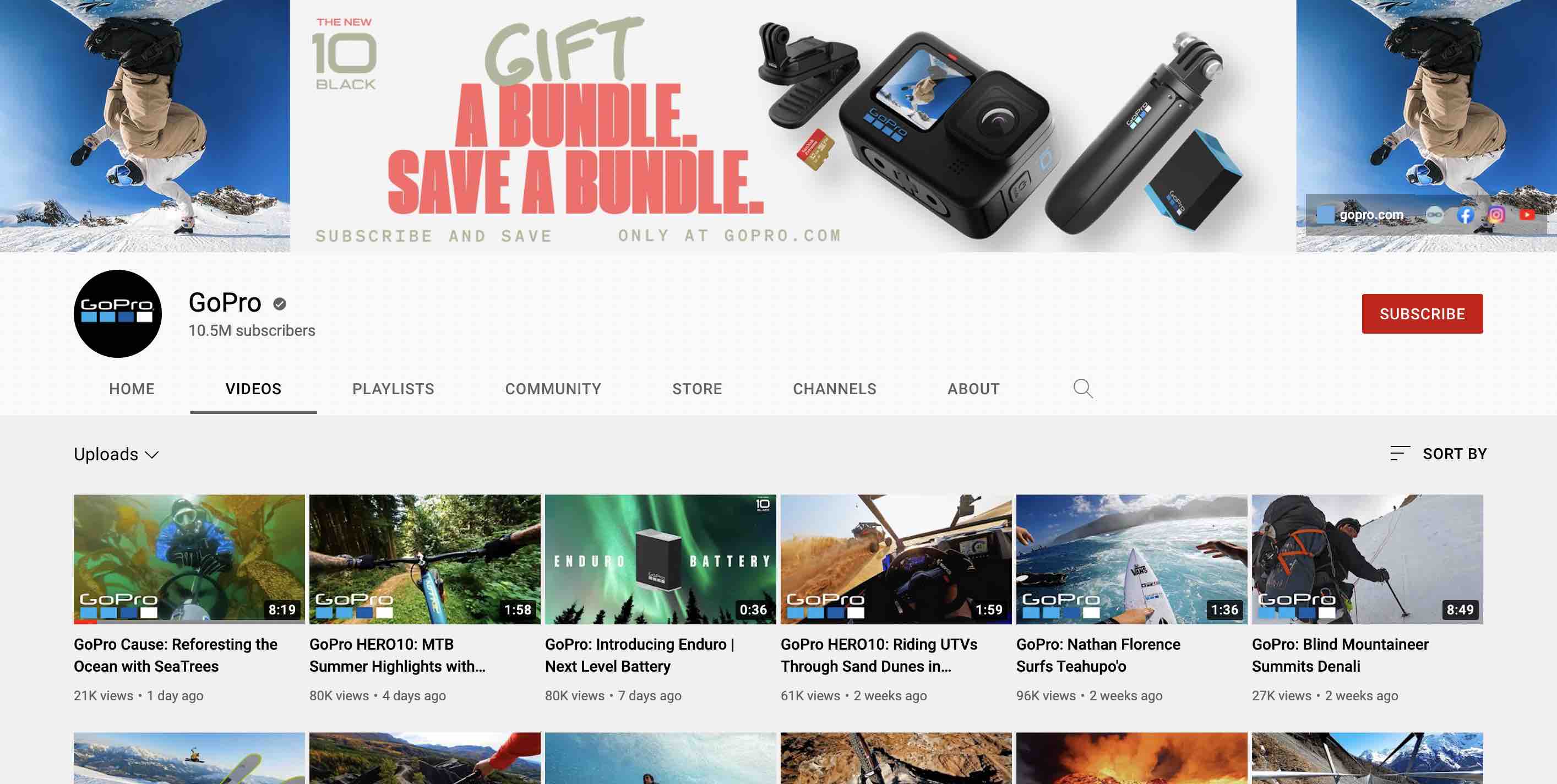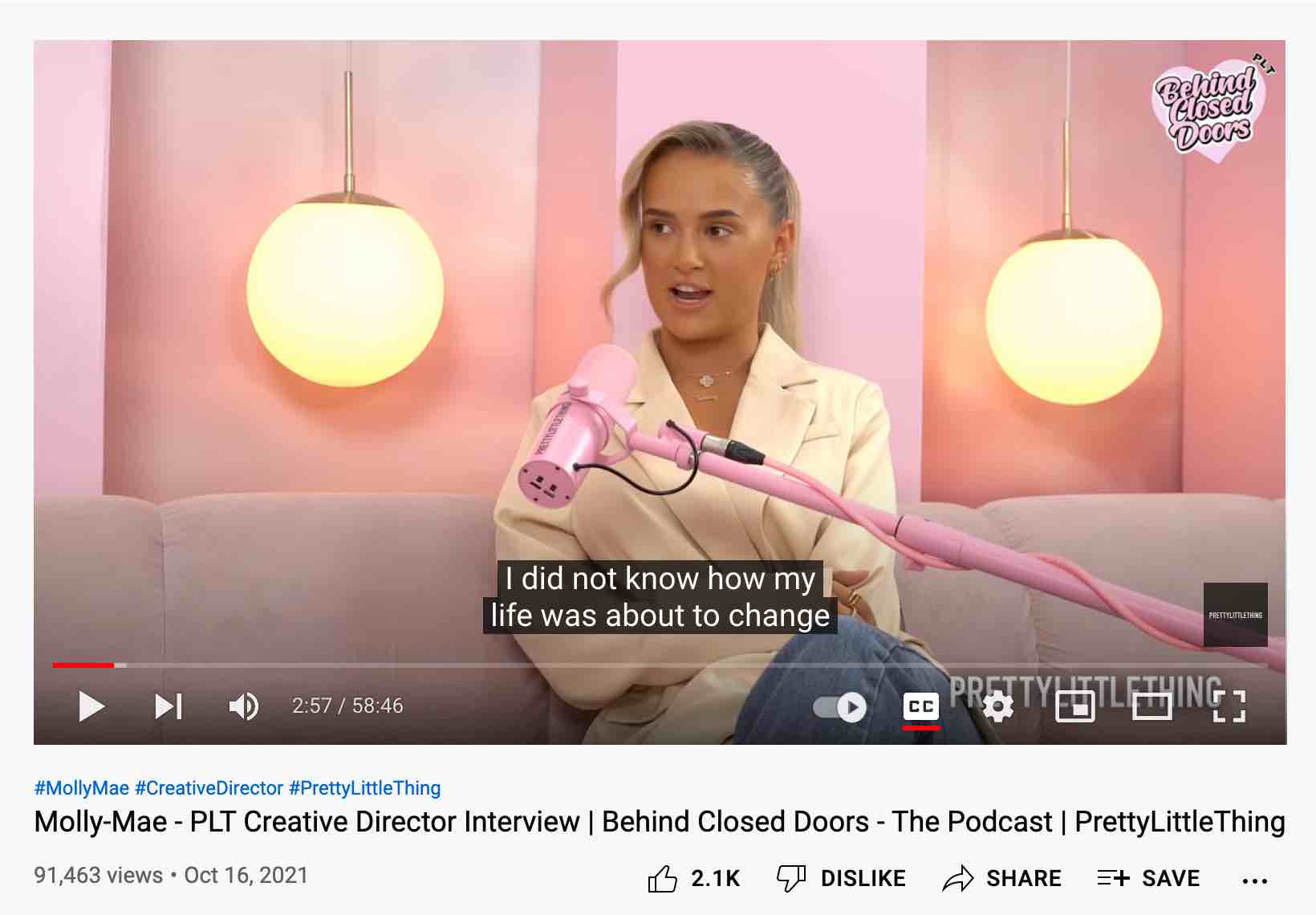Deciding on the next step for your business is a big one. And since you’ve found your way to this page, it’s likely that you’re in a toss up between creating a podcast or a YouTube channel.
The truth is, both strategies are good. There is no “one is better than the other” answer.
Despite first coming into play during the early 2000s, podcasting is still considered to be a relatively new form of content. There’s still a growing sense of excitement around them. Many businesses are only just starting to implement podcasts into their marketing strategies.
YouTube videos on the other hand, are a proven way of getting your brand seen and heard. Cisco recently estimated that 82% of all internet traffic will be video by 2022. Based on that fact alone, it’s definitely worth including somewhere in your marketing strategy.
So, which way do you go? Or, should you try to do both?
This article will look at the pros and cons of each strategy, as well as a few effective podcasting and YouTube strategies implemented by businesses and brands.

Book Your Next Podcast Guest the Easy Way
With more than 70,000 members, MatchMaker.fm is the largest online community connecting podcasters & guests.
Join MatchMaker todayThe Pros of Starting a Podcast
Creating a podcast for your business has many benefits - we’ve explained each one below.
Easy Production and Low Running Costs
If you don’t have hours and hours to spend building a podcast, the good news is that they’re relatively easy to make. You only really need a microphone, a recorder, and a concept to get going. This means they’re pretty cheap to set up too, and once you’ve made your initial investments in the right equipment, the running costs will stay quite low. If you’re not sure which bits of equipment you’ll need, have a look at the beginner’s guide below:
Connect With Audiences Around the World
Podcasts are also really accessible. Listeners can tune into your show from anywhere around the world, making them the perfect tool for reaching new audiences. They also feel personal to the listener - if you speak to any podcast fan, they’ll probably be able to tell you a fair bit about their favourite host. The host-to-listener relationship is a major selling point of podcasting. There’s something about audio that helps to build a tight-knit community amongst listeners, and that can add real value to your business.
Listeners Can Stream Podcasts On-The-Go
The sheer amount of time that audiences spend listening to podcasts is key to the community around them. Episodes are typically longer than YouTube videos for one, but they’re also a lot more versatile. They don’t demand sit-down viewing time, they can be played anywhere. Walking the dog, commuting to work, doing the housework,... the list goes on. This convenience factor is important.
Opportunity for Good Financial Returns
The monetary gains from podcasting can be worthwhile, too. If you produce good content and put the work in, you might be able to find sponsors. This is a good way of monetising your show and making it a nice little earner. Getting your podcast to this point does take a lot of work though, so try not to be disheartened if you don’t see any immediate financial rewards.
Doesn’t Need You to Be on Camera
Finally, podcasting doesn’t require you to be a natural born entertainer. Presenting to the camera can be a daunting prospect, and if you’re not overly experienced or confident in doing so, it can have a negative impact on the quality of your content. So as long as you can effectively engage with your audience using just your voice, you’ll be golden.
Why Might Podcasting Be Right for Your Business?
- Fairly easy to make with low running costs
- Can be streamed worldwide
- Great for building a strong, personal relationship with audiences
- Convenient and can be listened to on-the-go
- Good earning opportunities through sponsorships
- Doesn’t require you to present to a camera
The Pros of Starting a YouTube Channel
Another option is to set up a YouTube channel, which also has a few different benefits.
The Most Popular Online Content Platform
Over 122 million people visit YouTube every day. And with over 2.7 billion monthly users, it's easily the most popular platform for online content. There are no two ways about it. Statistics show a staggering 1 billion hours of content are watched on YouTube every day. So it’s no surprise that video content would be a valuable asset for your business.
YouTube Videos Are SEO Friendly
Part of this value comes from the discoverability of YouTube content. YouTube is owned by Google, putting it at an immediate advantage over podcasting platforms. To put this into context, if somebody searches “podcast or video” into Google, the first thing that’ll pop up is a YouTube result. Audiences are automatically guided there, making it something podcasting platforms can’t compete with.

In summary, YouTube videos are far more discoverable from an SEO perspective than podcasts. No extra work is required to get your video to rank in the results pages. As long as your content itself is good enough, the Google algorithm will do the heavy lifting to help you reach a wider audience.
Easy to Reach New Audiences
We’ve all fallen down a YouTube rabbit hole at least once, right? This is due to how YouTube recommends videos. If it thinks you’ll be interested in something, it’ll display it down the right hand side of the screen.

More often than not, audiences will go into auto-pilot and keep clicking what catches their eye. The cycle repeats over and over again. Not great for the watcher’s procrastination habits, but excellent for the content creator’s viewing stats. If your video is recommended and then watched, the chance of more people seeing your work is likely. And that’s always a bonus.
Like with podcasts, YouTube content is available worldwide too. Once you’ve uploaded your content and pushed it live, there are few geographical limits on where it can be watched.
Why Might YouTube Be Right for Your Business?
- It’s the most popular online content platform worldwide
- For SEO purposes - videos typically perform better than podcasts
- Sophisticated algorithms promote and recommend content to viewers
- Accessible worldwide
The Cons of Starting a Podcast
As with all good things, there’s often a few downsides. Below are a few pointers to think about with podcasting.
Podcasting Isn’t Visual
If your business is selling a product, visual content is probably the most effective way of marketing it. It seems obvious, but podcasts aren’t visual tools. If you’re wanting to put a face to your brand, a podcast isn’t going to help with that either.
Can Be Difficult to Get Noticed, Initially
Unlike YouTube’s recommendation tool, something to think about with podcasts is how discoverable they are. If you’re a smaller business, being easy to find is important. Podcasting alone won’t get your business known, you’ll have to do a bit more work. This doesn’t have to be difficult. Putting together a marketing strategy for your show will help, and could involve anything from transcribing episodes to creating a newsletter.
Episodes Need to Be Uploaded Consistently
To give a podcast the best chance of success, you need to dedicate time to putting out regular episodes. For example, one episode a week for a few months at a time. This can be quite demanding, especially if your marketing team is busy doing other things. We’d recommend having a dedicated resource for podcasting, to ensure that you can be consistent with your uploading schedule.
Why Might Podcasting Not Be Right for Your Business?
- Podcasts aren’t visual tools
- Content isn’t massively discoverable
- Requires extra work to build up SEO value
- Needs a consistent production and upload schedule

The #1 Podcasting Community
With more than 70,000 members, MatchMaker.fm is the largest online community connecting podcasters & guests.
Join MatchMaker todayThe Cons of Starting a YouTube Channel
Impressive algorithms aside, there are some drawbacks to consider with YouTube.
Meaningful Ad Revenue Takes Time
It takes a lot of hard work to start seeing any financial rewards from video content. And before YouTube will start paying you for your work, you’ll need to hit certain milestones. Diving into the intricate details of AdSense or CPI can be quite complicated, so we won’t go into the specifics here. In general though, creators typically get around $5 for every 1000 views. Google will also take 32% of all revenue that’s earned through advertising. However, like with podcasting, if you’re truly determined and you put in the work, earning money from YouTube will get easier with time.
Video Content Is Demanding on the Viewer
With YouTube, you’re asking viewers to dedicate an allotted amount of time to sitting down and watching your videos. They won’t be able to tune in from the car, as they would with a podcast. Bear in mind that video content isn’t versatile in this manner, and instead, it’s actually quite demanding on the viewer. If your audience isn't immediately interested in giving you their time, don’t be put off. Instead, think of ways to earn that respect and build your relationship with them.
Attention Is Harder to Retain
Finally, we talked about the benefits of YouTube’s recommendation tool above. And although it can help draw viewers to your content in the first place, it’s good to recognise that it can also drive them away. So, if someone’s enjoying your video and YouTube recommends them something else, they might click off of yours and on to the next one. The recommended videos are always there on the right hand side of the screen calling out for the viewers attention. This will negatively affect your traffic bounce rate.
Why Might YouTube Not Be Right for Your Business?
- Fairly difficult to earn money, initially
- Requires audiences to devote their time to watching your content
- Not very flexible or versatile - audiences can’t listen on-the-go
- Algorithms can affect bounce rates and pull people away from your content
3 Podcast vs YouTube Case Studies
Now we've gone through the pros and cons of both mediums, let's put it into practice. Below, we've picked out an example of a brand that's prioritised audio podcasting, one that's chosen video content, and one that's implemented both.
Have a look through and see which example resonates the most with your brand. From there, you'll hopefully have a good idea of which route to take.
Case Study #1: Dyneema®, Moments That Matter

DSM’s Dyneema® is the world’s strongest fibre. Their Moments That Matter podcast talks to guests who work in high-pressured environments, like mountaineers, expeditioners, and innovators. Hosted by Charlie Walker, (explorer, writer, and public speaker), each episode welcomes a new guest and discusses the exact moment that defined their careers. The show is centered around Dyneema’s involvement, and discusses how their robust, high-strength fabric played a pivotal role in each story.
Because the podcast’s primary goal was to tell a story, the need for visual representation wasn’t there. Audio alone helped to form a closer, more personal relationship with listeners. Each episode was also 30 to 60 minutes long - the perfect length for car journeys, commutes, and dog walks. Identifying who your listeners are, and what they’re most likely to be doing whilst engaging in your content, will help you decide between audio or video.
Moments That Matter wasn’t necessarily about selling a product directly, but rather to engage and educate Dyneema’s target audience on how their fabric has made a difference. The podcast reached an audience of 20k+ adventurers, mountaineers, sailors, and cyclists.
Case Study #2: GoPro

Technology-giant GoPro was founded in 2002, and sells camera equipment and video-editing software. In 2009, they set up their YouTube channel and have been regularly uploading content ever since. Over time, they’ve amassed 10.5 million subscribers and 3 billion views.
Customers want proof that products work before spending money on them. They also want to see product demos, highlight reels, tutorials, how-to guides, and all the best tips and tricks. In GoPro’s case, audio content would have served no purpose to that agenda.
GoPro heavily relies on video content to make sales. If you can show customers what’s on the table from the get-go, it’s a great way of building transparency, trust, and reputability.
Case Study #3: PrettyLittleThing, Behind Closed Doors
If you’re still struggling to decide between podcast vs YouTube, making content accessible as both is a good idea. Whilst it may take a little more effort, there’s real value in doing so. It’s a strategy that many brands use. Take UK-based retailer PrettyLittleThing (PLT), for example.
PLT is a fast-fashion brand that regularly teams up with celebrities and influencers for marketing purposes. Their strategies have built up a huge online presence over the years, and in 2019, they released the first episode of Behind Closed Doors. The podcast has always been released as both audio and video content, catering to audiences on multiple platforms.


One of the great things about video recording your podcast and uploading it to YouTube, is that it opens the gateway for other content ideas. Putting everything together and in one place is excellent for engaging your demographic and connecting with more people. For example, PLT also use their channel to showcase new collections, partnerships, business moves, general behind-the-scenes content, and more.
Tips For Growing a Podcast on YouTube
If you’re leaning towards both audio and video, rather than podcast vs YouTube, learning how to optimise both forms of content is useful.
Keeping all of your content in one place is important. Chris Williamson, host of Modern Wisdom, explained why when he spoke to us over at Podcast.co earlier this year. He said:
I’ve chosen not to create a second channel for podcast clips. From what I’ve seen from others, doing so reduces the growth of your main channel, and you then end up with a fairly lame second one that nobody cares about.
He goes on to talk about the value of repurposing your podcast into YouTube videos.
Podcast clips have been a huge driver of traffic for me. If you get a guest on your show and just put out an episode, there are infinite ways you could have chopped that up for YouTube. The priority is to grow the audio, because it’s the most consistent in terms of growth. But YouTube is what’s driving it. You can use YouTube as the front end of the funnel.
In short, you can get an awful lot of mileage from a single video podcast episode on YouTube. It takes extra work to run your show across both mediums, but getting it right pays dividends.
Podcast vs YouTube - Which Is Best for Your Business?
If there’s one thing to take away from this article, it’s the importance of knowing who you are as a brand, and what you’re hoping to get out of your content. It’s not a one-size-fits-all problem.
Choosing whether to start a podcast or a YouTube channel needs careful consideration, and you need to have a clear idea of what you want to achieve with your content strategy.
If you’re selling a product that would benefit from being visualised, like GoPro, you might want to think about prioritising YouTube. If your goal is to tell stories and connect with your audience, like Dyneema did, podcasting would probably be more beneficial. And finally, if you think your business is suited to both and that’s something you’d like to explore, don’t be afraid to give it a go by launching your own video podcast like PrettyLittleThing.

The #1 Podcasting Community
With more than 70,000 members, MatchMaker.fm is the largest online community connecting podcasters & guests.
Join MatchMaker today





